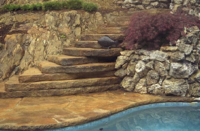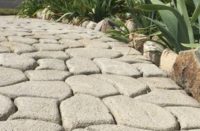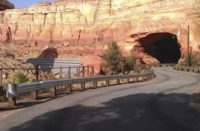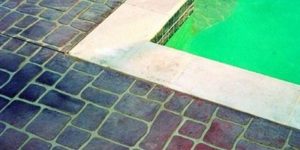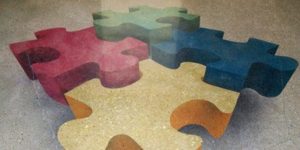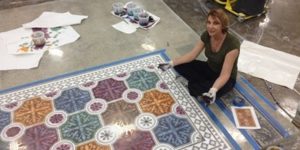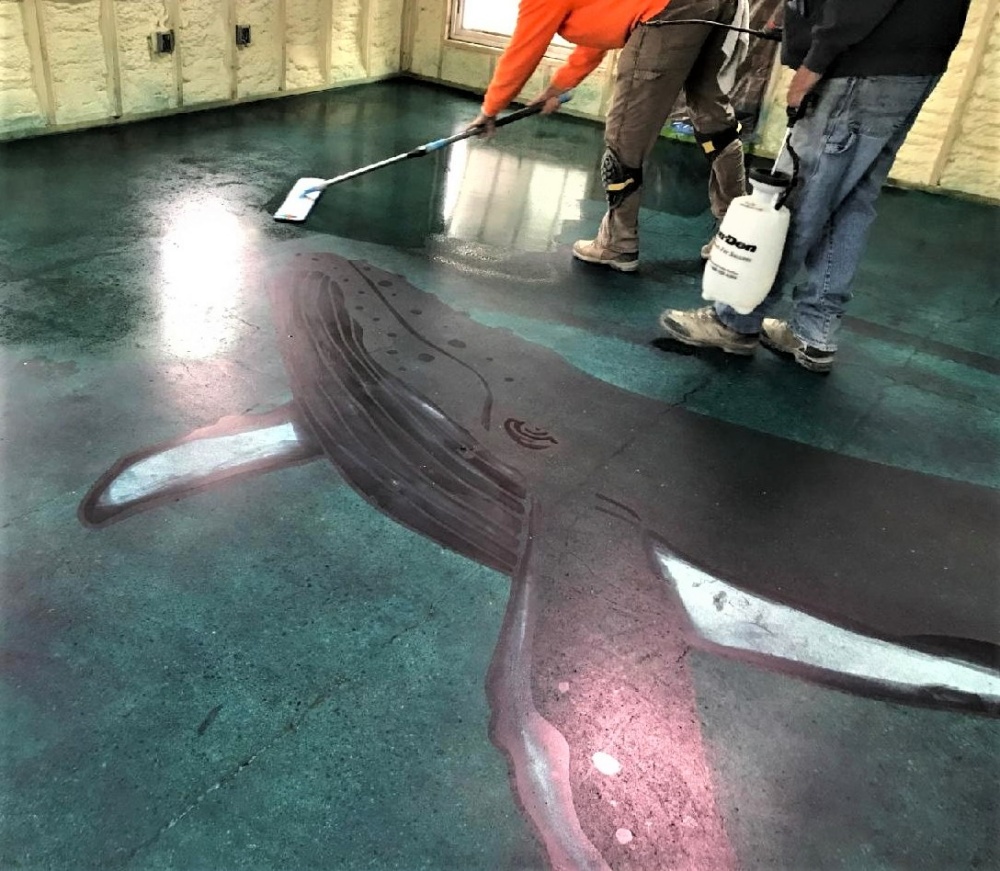
When Ocean Alliance Inc., a nonprofit organization dedicated to whale conservation, bought an old paint factory in Gloucester, Massachusetts, it began renovating the site’s copper mill for its headquarters. The old mill, where Tarr & Wonson Paint Manufactory made its revolutionary boat-bottom paint during the 19th century, was legendary. For many years, it was the only factory in America that made copper paint to coat the hulls of ships.
During the renovation, Ocean Alliance explored its options of redoing the floors of this iconic maritime heritage. “We got a quote for vinyl floors which we thought would be affordable. However, even it was pricey,” says Alicia Pensarosa, assistant director of Ocean Alliance. “And it wasn’t an ideal surface.”
Concrete perpetuates a special vision
While surfing the web looking for other things, Ocean Alliance’s CEO, Iain Kerr, visited a drone site where he saw a display ad promoting Reliance Concrete Polishing. He asked Pensarosa to check out the company based in Exeter, New Hampshire.
“A quick phone call for an estimate led us to a wonderful whale-loving team at Reliance Concrete Polishing. They offered to donate their services!” says Pensarosa. Turns out charitable work and the stewardship of resources are very important to the owner, Brent Morgan, and his wife, Deb.
What impressed Pensarosa even more was that they went above and beyond anything Ocean Alliance had imagined. “They had a creative vision for the space,” she says. “They made it much more special than just a stained and polished concrete floor.”

Include the whales visually
As for the quickly formed relationship, “We just hit it off and decided to help them,” Brent Morgan says. He and his crew could polish the existing old concrete in the building, no problem. But to make the floors a real draw, he suggested they work with Floormaps. The stencil manufacturer, based in Rogers, Arkansas, could create whale art for the floor. Plus, one of its custom stain experts could make that vision spring to life.
Pensarosa worked with Floormaps’ co-owner Kathren Knigge to come up with a humpback whale design for the second floor. “The humpback is iconic. It’s one of the most well-known species in New England,” Pensarosa says about the whale installed first. “It’s very charismatic.”
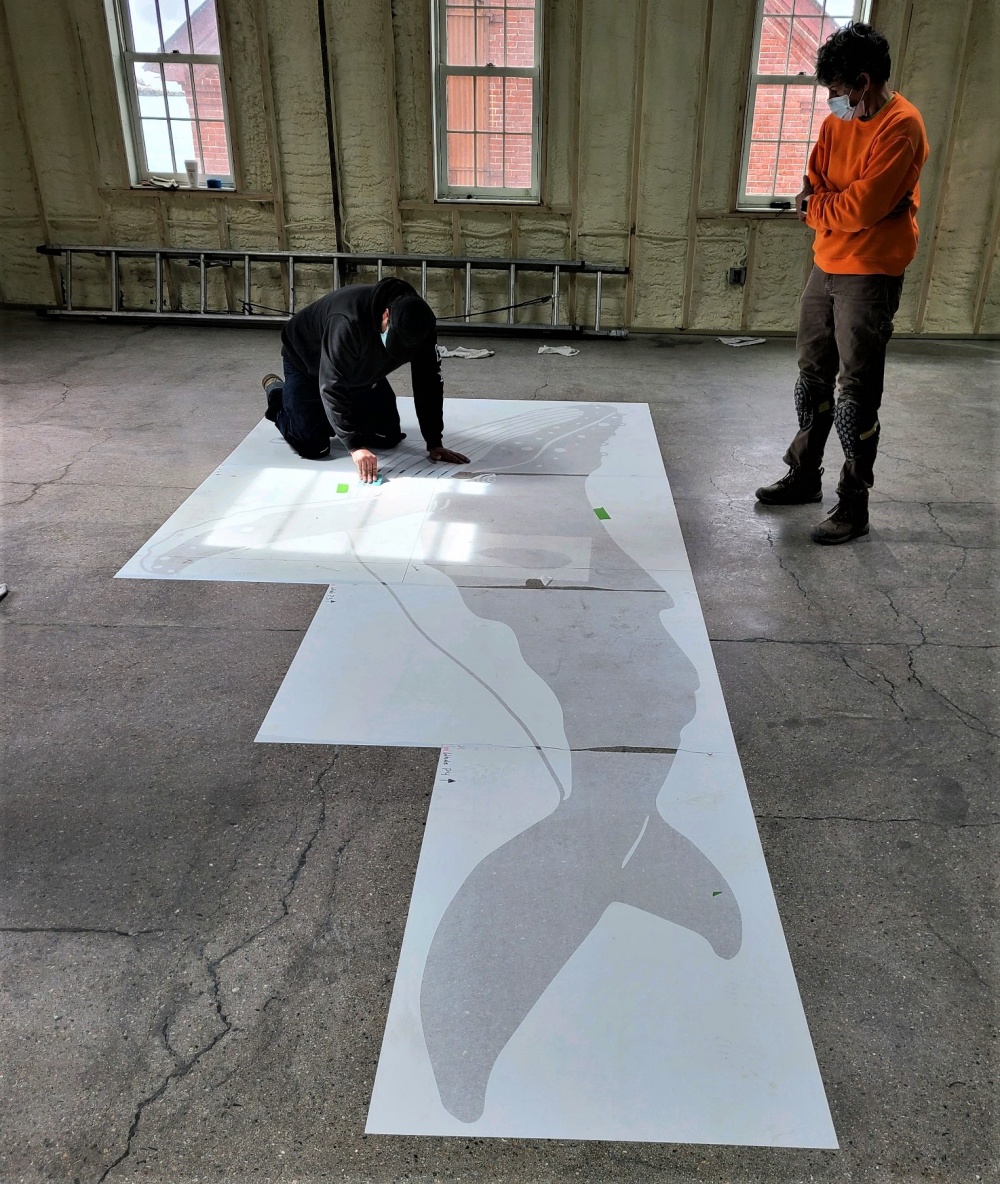
The right whale stencil, designed from video footage of a mother and her calf, greets visitors on the first floor. Although not part of the original plan, the duo grabs most everyone’s attention and starts conversations about conservation. “The North Atlantic population is critically endangered,” Pensarosa says.
“Both stencils are pretty amazing,” she says. While both the floors and whales are stained, the treatment brings out concrete’s natural characteristics. “The floor makes the space look more modern while reflecting our ocean conservation efforts.”
Overall, she continues, “Not only do the floors look amazing, but they are also environmentally friendly, resilient and easy to clean.”
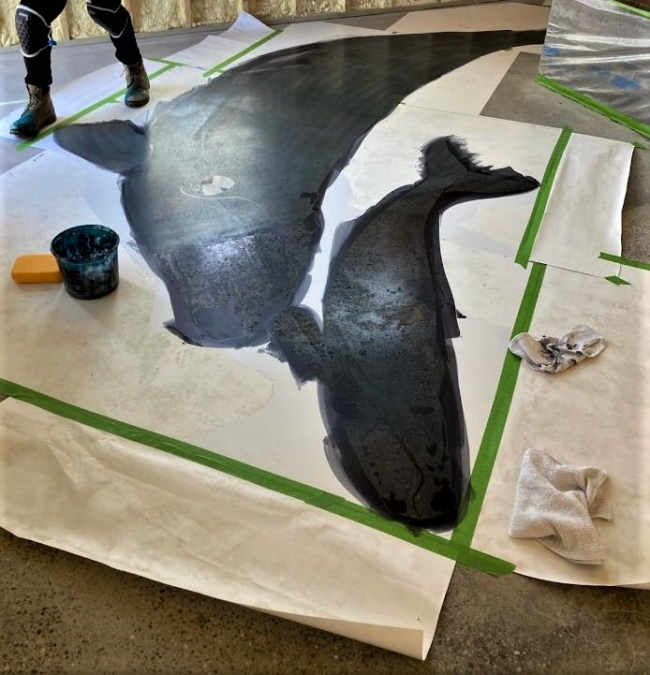
Old concrete adds character
Morgan says the project’s biggest challenge involved dealing with the 150-plus-year-old concrete in the old copper paint factory. “We had to get a bunch of environmental things taken care of,” he says.
However, the vintage concrete’s stains and cracks worked to their benefit. “They add character and make the whales look real,” he says, especially the humpback. Whales in the wild are not pristine creatures, Morgan explains. They have barnacles and things growing on them, as well as scrapes here and there from life’s encounters.
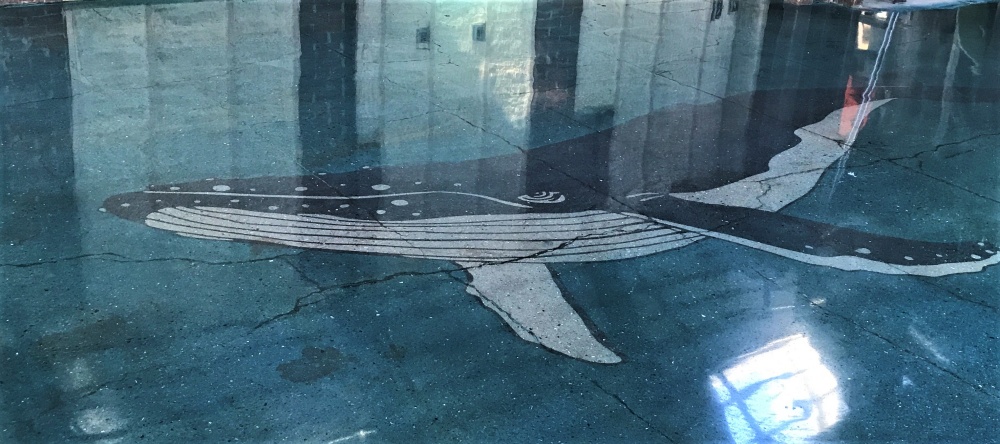
To polish the floors, Morgan says they started with 30-grit metal-bond diamonds, followed by 100-grit metals. Then they moved on to 100 and 200 resins before laying down the decal and the color. After the color of the whale was down, they made a pass with 200-400 resin diamonds.
Next, the crew applied Prosoco LS Densifier before running three-steps of resin diamonds. Finally, they applied Prosoco LSGuard and burnished.
While Morgan says he and his crew were all part of the custom stencils’ installation process, “Eugene was the one who made things turn out so well.”
Artist works wonders
Eugene Ortiz, a contract artist who’s worked with Floormaps since 2008, met with Morgan and Kerr to devise a plan. Kerr wanted the coloring to look “organic.”
“Usually I’d spray the dye but this time I applied it with a microfiber rag,” Ortiz says. “I dipped it into the dye and hand-wiped it so it has very subtle brush strokes.”
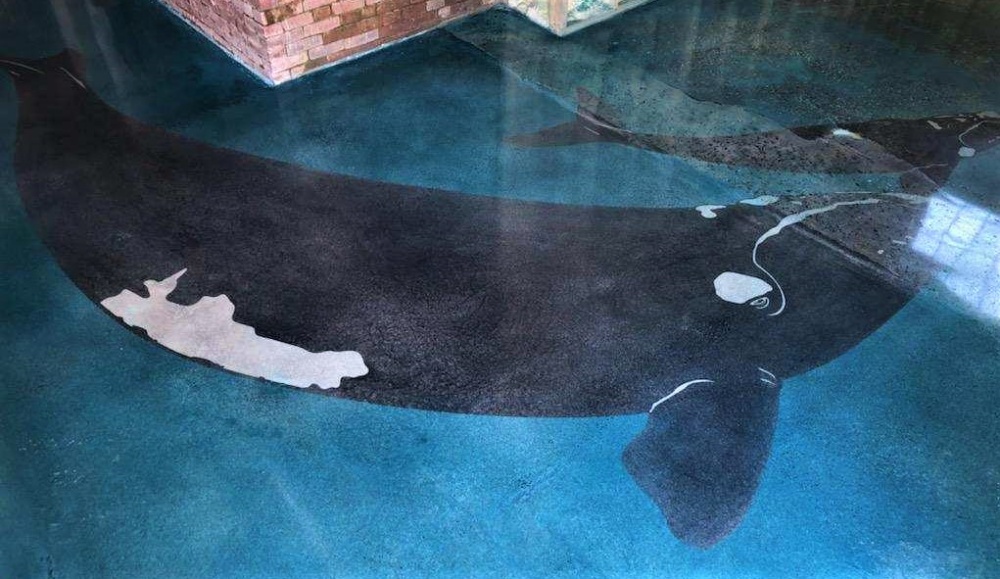
For the humpback, he used a powdered acetone dye in Black and Slate Blue from the Ameripolish Classic line. “I used mostly Black and added a couple of shakes of Slate Blue to give it a blue tint,” he says.
For the right whale and calf, Ortiz used a combination of Black and Ocean Blue dye from Prosoco’s GemTone stain line. He found wiping in the color physically challenging, especially for the mother whale. “She was just so big,” he says.
When hand-wiping, he says he creates movement by following the whale’s contour and making the strokes in the same direction.
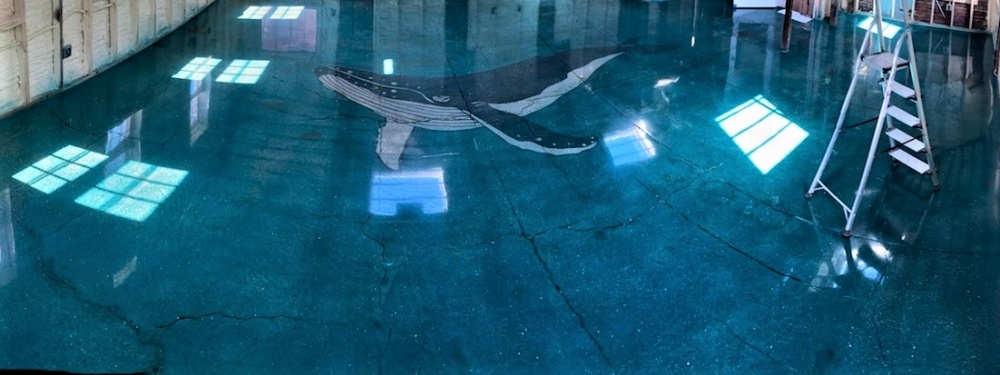
For a realistic touch
Overall, Ortiz says he’s particularly proud of the way the ocean colors turned out. Upstairs, he used a mixture of Ameripolish Classic Turquoise and Forest Green. Downstairs, he mixed the Turquoise and a little Forest Green with Prosoco GemTone Emerald and Ocean Blue.
He applied two coats and a partial third with a hand-pumped sprayer to create light and dark spots to replicate peaks and valleys. “This gives the water realistic movement,” he says.
